13 Ideal Companion Plants for Zinnias and Some to Skip
Zinnias are vibrant, easy-to-grow flowers that can brighten any garden. Pairing them with the right companion plants can help improve their growth and attract beneficial pollinators. However, some plants do not make ideal companions for zinnias due to differing care needs. In this article, we will explore the best companion plants for zinnias and some varieties you should avoid to ensure a thriving garden.
This post may contain affiliate links, which helps keep this content free. Please read our disclosure for more info.
Best Zinnia Companion Plants – Marigolds
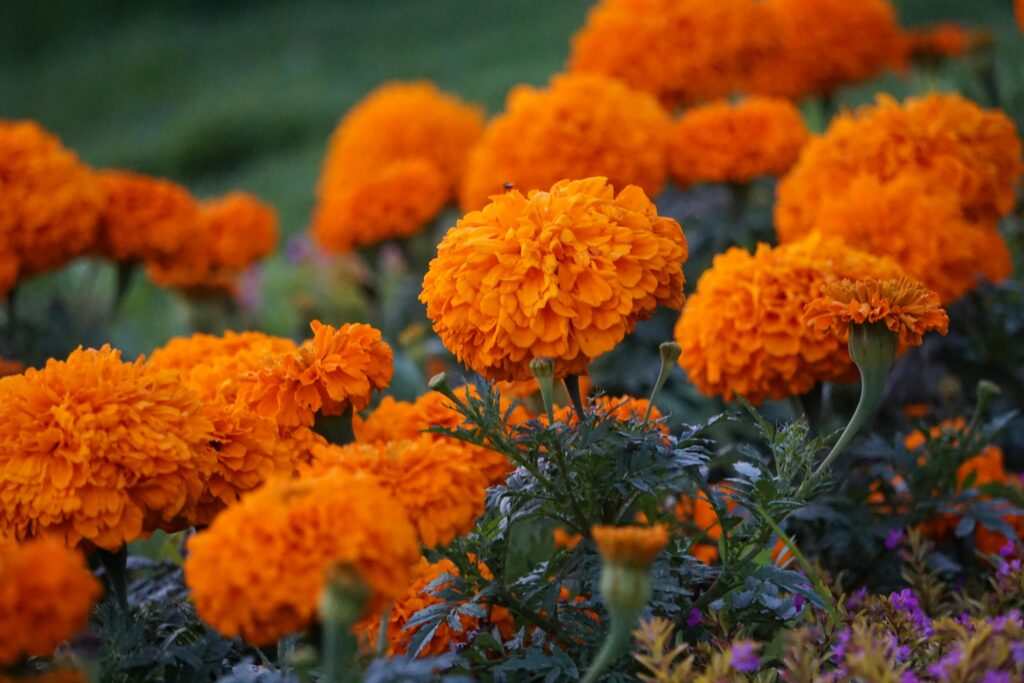
Marigolds make an excellent companion for zinnias due to their ability to repel pests like aphids and nematodes. They attract beneficial insects such as bees and butterflies, which help support the growth of zinnias. Both flowers thrive in similar soil conditions and require full sun, making them easy to pair together. The bright, bold colors of marigolds complement the vibrant blooms of zinnias, creating a visually appealing garden.
Marigolds also help reduce the need for pesticides by naturally controlling harmful insects. Their contrasting colors make for an eye-catching display when planted with zinnias. The strong scent of marigolds adds another layer of appeal to the garden. This combination results in a healthy, thriving space with minimal upkeep.
Cosmos
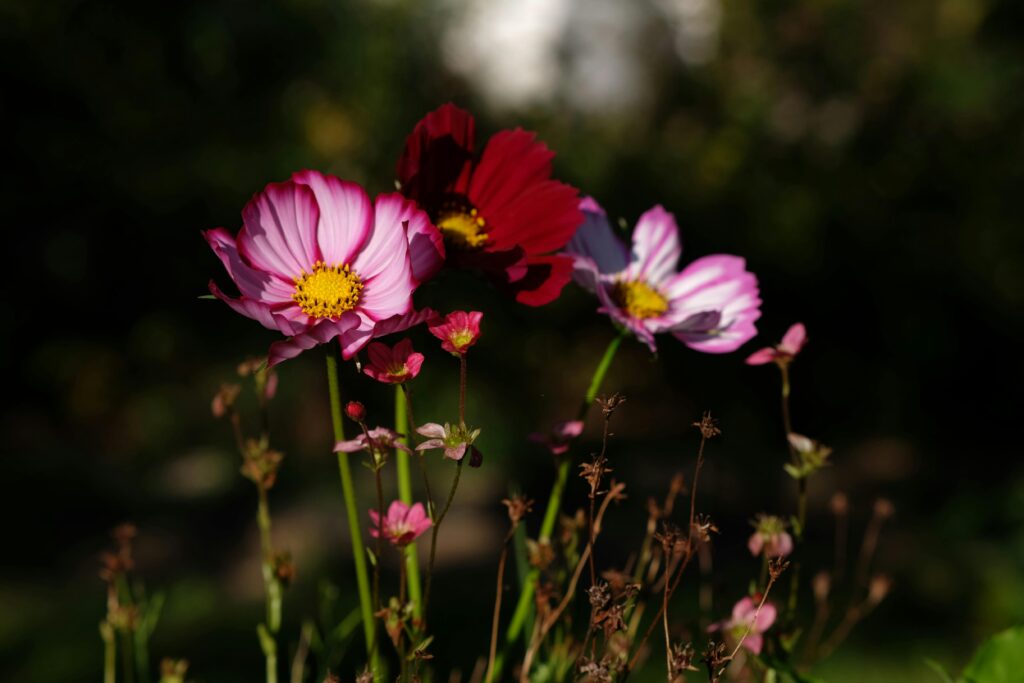
Cosmos pair wonderfully with zinnias, as they share similar growing needs like full sun and well-drained soil. Cosmos add height and texture to the garden, offering a distinct contrast to zinnias’ bushier growth. Both flowers attract pollinators like bees and butterflies, which helps promote the overall health of the garden. The airy, delicate flowers of cosmos balance out the bold, colorful zinnias, enhancing the visual appeal of the space.
Their feathery foliage provides a soft backdrop to the vibrant zinnia blooms. The two plants require minimal care and are resistant to pests, making them perfect for low-maintenance gardening. The combination of cosmos and zinnias ensures a garden filled with color and interest. Together, they provide a beautiful and harmonious arrangement with little effort.
Lantana

Lantanas are a fantastic choice for pairing with zinnias, as they thrive in the same warm, sunny conditions. Their bright, multi-colored flowers attract bees, butterflies, and hummingbirds, benefiting both plants. Lantanas’ spreading growth habit works well as a ground cover, filling in spaces and preventing weeds. Their drought tolerance makes them an ideal choice for low-maintenance gardening.
Pairing lantanas with zinnias adds an exciting splash of color and attracts beneficial insects. The resilience of lantanas to various weather conditions makes them an excellent companion for the more delicate zinnias. Their colors often complement zinnia blooms, creating a lively, vibrant garden. This pairing results in a diverse, flourishing garden with minimal care.
Nasturtiums

Nasturtiums are great companions for zinnias because their bright, bold flowers add color and contrast to the garden. They are easy to grow and can tolerate poor soil conditions, which makes them an excellent choice for pairing with zinnias. Nasturtiums act as natural pest repellents, particularly for aphids, providing protection for zinnias. Their trailing growth habit makes them ideal for use as ground cover or in hanging baskets.
In addition to their pest-repellent properties, nasturtiums have edible flowers that add an extra layer of usefulness to your garden. Their vibrant colors complement the blooms of zinnias, enhancing the overall appearance of the garden. Nasturtiums help minimize the need for chemical pest control, making them an eco-friendly option. This pairing creates a visually stunning and functional garden space.
Sunflowers
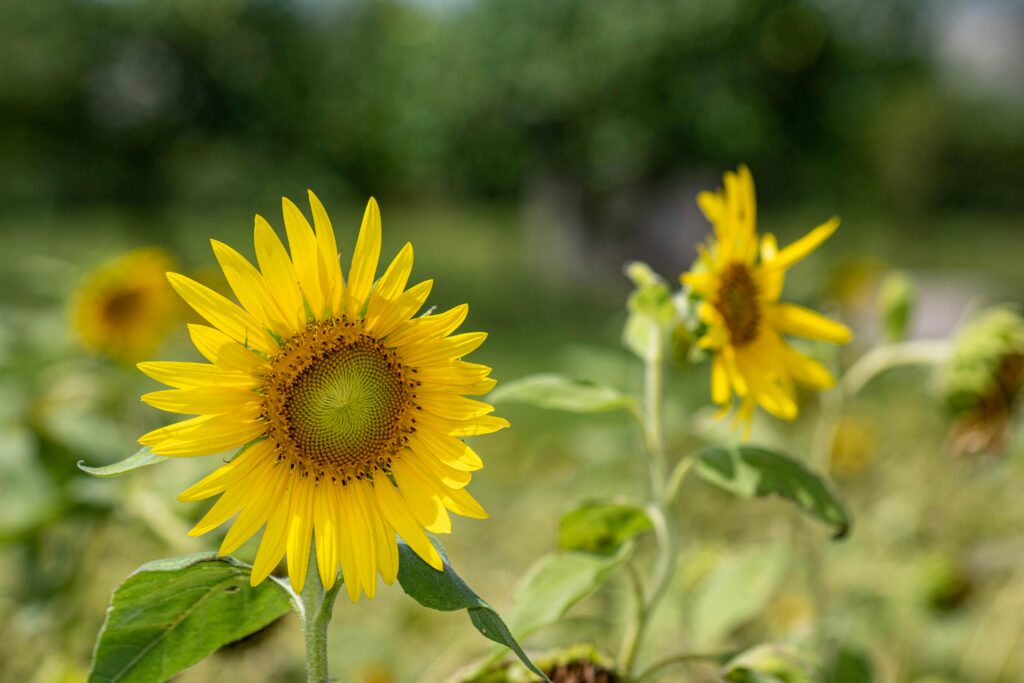
Sunflowers make an excellent companion for zinnias due to their shared preference for full sun and well-drained soil. The tall stems and large blooms of sunflowers provide a beautiful backdrop for shorter zinnias. The bright yellow flowers of sunflowers attract pollinators that will also visit the zinnias, helping to improve pollination for both plants. The sunflowers also provide some shade for zinnias during the hottest part of the day.
Sunflowers’ height contrasts beautifully with the smaller stature of zinnias, creating an attractive visual balance. Together, the bold, colorful blooms of zinnias and the towering sunflowers create a stunning display in the garden. Both plants are easy to grow and require minimal maintenance, making them ideal companions. The combination offers a flourishing garden that remains vibrant throughout the season.
Snapdragons
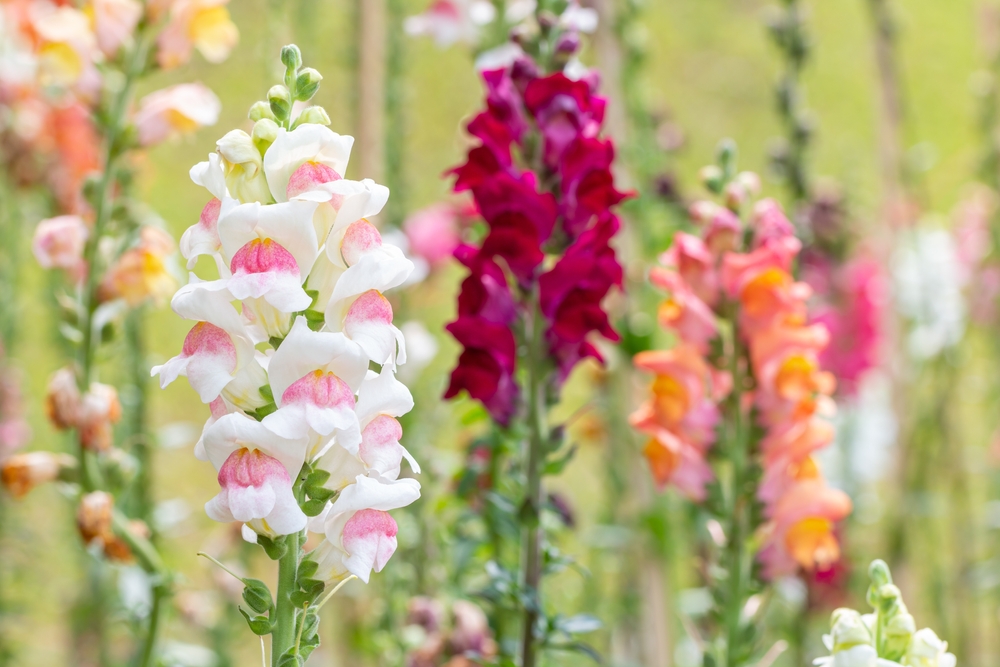
Snapdragons pair beautifully with zinnias due to their vertical structure, which contrasts with the bushier form of zinnias. Both plants thrive in full sun and well-drained soil, making them easy to grow together. Snapdragons attract a variety of pollinators, which helps increase the pollination of zinnias. The tall, spiky flowers of snapdragons add height, which balances out the low-growing zinnias.
The mix of shapes and colors from snapdragons and zinnias creates a dynamic and visually striking garden. The upright growth of snapdragons adds vertical interest, complementing zinnia’s rounded, vibrant blooms. Both plants are low-maintenance, ensuring a colorful and healthy garden with little effort. This pairing enhances the garden with both texture and color.
Petunias
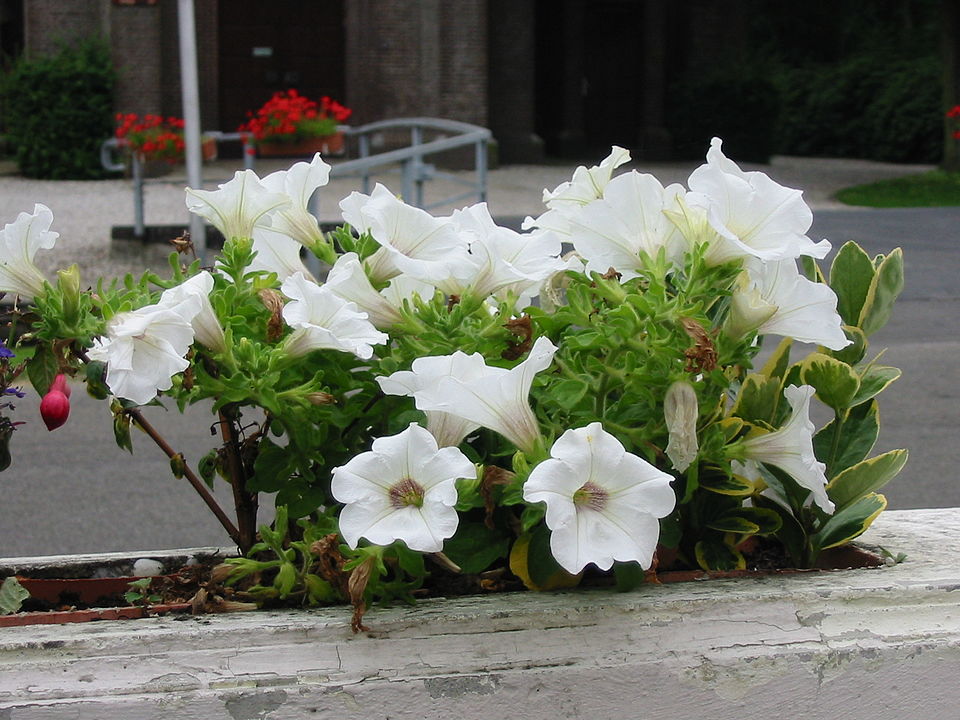
Petunias thrive alongside zinnias as both plants prefer full sun and similar soil conditions. Their trailing growth habit fills in the gaps between zinnias, creating a fuller, more lush garden. Petunias come in a wide range of colors, which make them a perfect match for zinnias’ bold hues. Like zinnias, petunias attract pollinators, contributing to the overall health and vitality of your garden.
The variety of petunia colors works harmoniously with the vibrant blooms of zinnias, adding depth to the garden. Both plants require similar moisture levels, making them easy to care for together. Petunias’ long blooming period ensures that your garden remains colorful throughout the season. By combining these two plants, you can create a beautiful, healthy garden with minimal effort.
Salvia

Salvia is another excellent companion for zinnias, as both plants thrive in full sun and well-drained soil. Salvia’s upright, spiky flowers add contrast to the round, colorful blooms of zinnias. The flowers of salvia attract pollinators, such as bees and hummingbirds, which benefit the zinnias by promoting better pollination. The deep hues of salvia complement the bold colors of zinnias, making them a visually appealing pairing.
Salvia’s long blooming period ensures that it will continue to provide color throughout the growing season. It is drought-tolerant, making it a low-maintenance companion for zinnias. Together, the vertical growth of salvia and the compact zinnias create a balanced and thriving garden. This combination contributes to a diverse, vibrant garden that supports a range of pollinators.
Alyssum
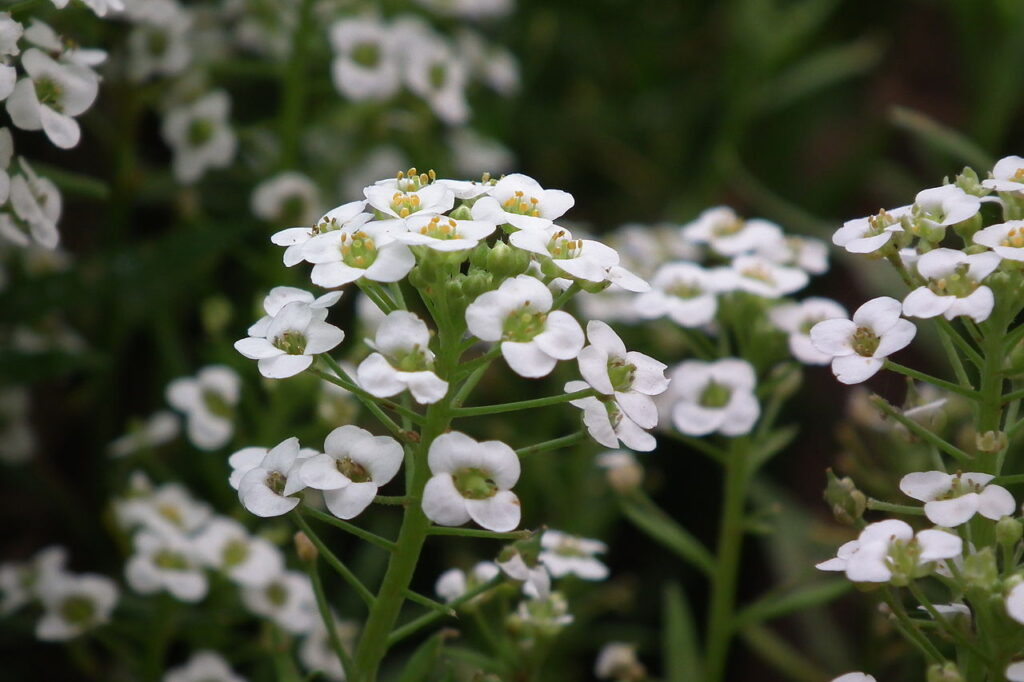
Alyssum is an excellent choice as a ground cover plant for zinnias, as it attracts pollinators and helps suppress weeds. The low-growing nature of alyssum works well under zinnias, filling in the gaps and providing a soft contrast with its small, white or purple flowers. Alyssum also retains moisture, which is beneficial for zinnias in dry conditions. It is easy to grow and requires minimal care, adding both beauty and function to the garden.
Together, alyssum and zinnias create a harmonious blend of textures and colors. The ground-covering nature of alyssum reduces weed growth, benefiting zinnias by giving them more space to thrive. The pollinators attracted by alyssum will visit both plants, boosting the health of the garden. This combination results in a beautiful, low-maintenance garden that flourishes throughout the growing season.
Sweet Alyssum
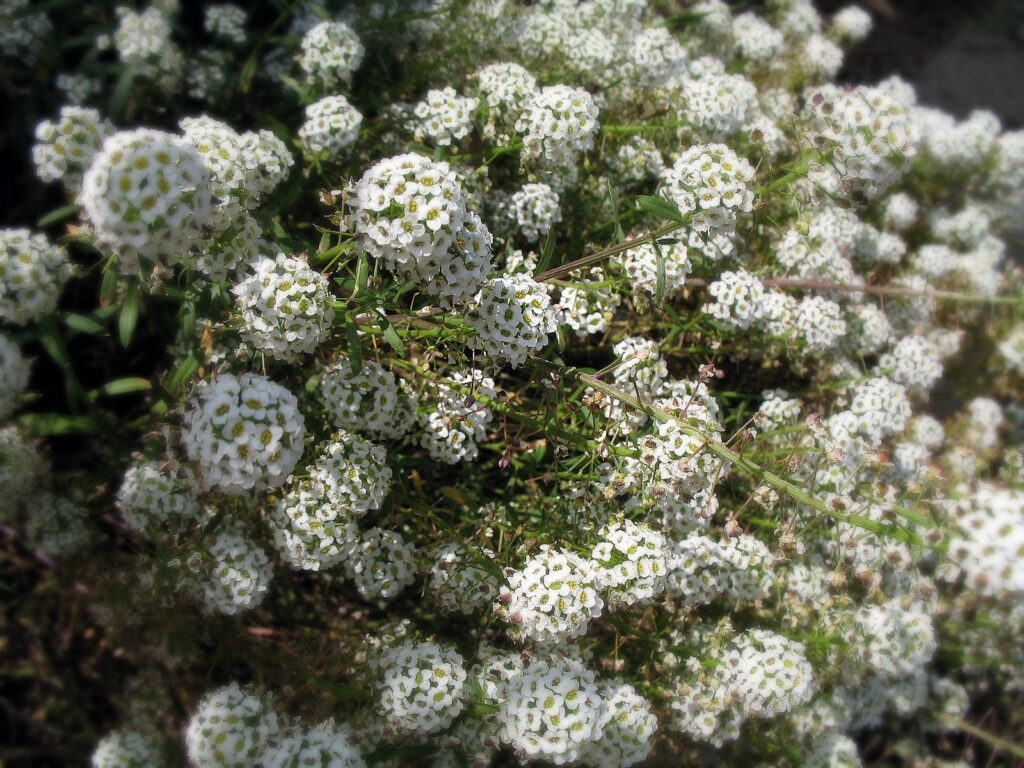
Sweet alyssum, with its compact, fragrant flowers, grows well in full sun and shares similar care requirements to zinnias. Its small flowers attract pollinators, which aids in the pollination of zinnias. Sweet alyssum also improves soil health by providing ground cover and preventing weed growth. The contrast between sweet alyssum’s small flowers and zinnias’ larger blooms adds beauty and variety to the garden.
Sweet alyssum’s low-growing nature protects the soil from erosion and helps retain moisture, which benefits zinnias. The soft, white to purple hues of sweet alyssum complement the vibrant zinnias, creating a balanced and colorful garden. Its ease of care and ability to attract beneficial insects make it an excellent addition to any zinnia garden. Together, they form a thriving, visually appealing garden space.
Daisies

Daisies and zinnias are a classic pairing, as both plants enjoy full sun and well-drained soil. Daisies’ simple, cheerful flowers complement the bold, colorful zinnias, creating a dynamic garden display. Daisies also attract pollinators, which helps improve the overall health of your zinnias. The two plants thrive in the same growing conditions, making them easy to care for together.
The combination of daisies’ rounded blooms and zinnias’ bold flowers adds texture and visual interest to the garden. Daisies’ sturdy stems make them an ideal backdrop for shorter zinnias, giving the garden structure. Both plants are low-maintenance, requiring minimal attention once established. This pairing helps create a vibrant, healthy garden with little effort.
Basil
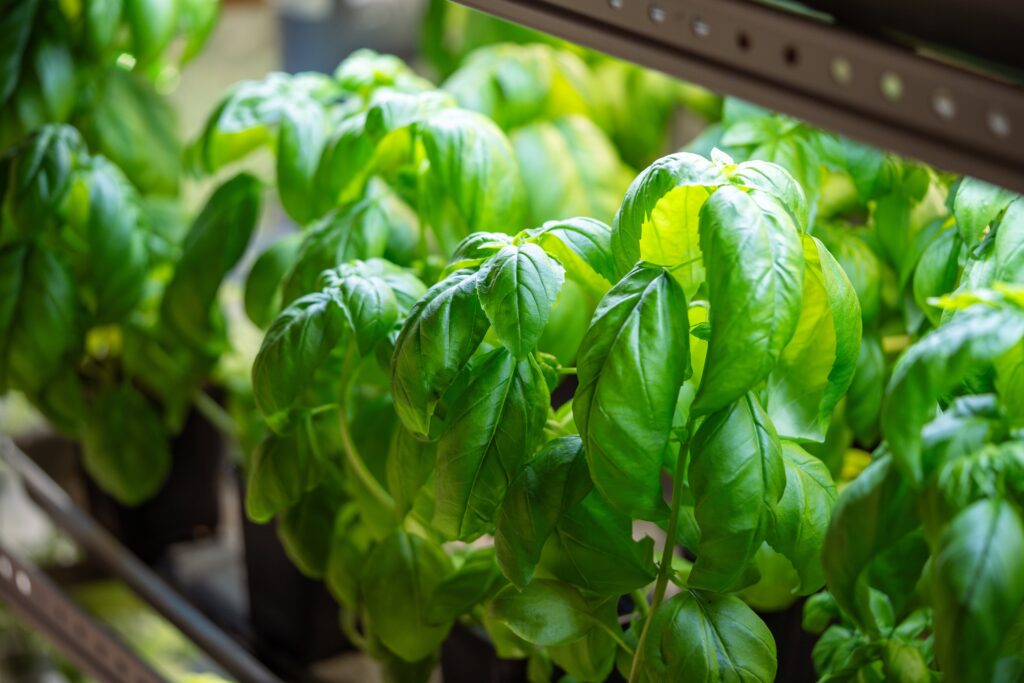
Basil is a fragrant herb that makes an excellent companion for zinnias, helping to repel pests like aphids and mosquitoes. The herb requires similar growing conditions to zinnias, making it an easy plant to pair with them. Basil’s strong scent can mask the fragrance of zinnias, deterring certain pests. In addition to being a natural pest deterrent, basil adds a wonderful aroma to the garden and is useful in cooking.
Basil’s compact growth provides a nice contrast to the vibrant, upright zinnia blooms. Both plants thrive in sunny, well-drained soil, making them simple to grow together. The addition of basil in your zinnia garden offers both functional and aesthetic benefits. It is a practical, beautiful addition to your garden that helps control pests while enhancing the overall atmosphere.
Thyme

Thyme pairs well with zinnias due to its similar growing needs, such as full sun and well-drained soil. It helps repel pests like aphids and whiteflies, which can damage zinnias. Thyme also serves as ground cover, keeping weeds at bay and retaining moisture for zinnias. The subtle fragrance of thyme adds a pleasant aroma to the garden.
Thyme’s creeping growth complements the upright, bold blooms of zinnias. It attracts pollinators, benefiting the entire garden ecosystem. Thyme and zinnias together create a balanced garden that is visually appealing and low-maintenance. This combination supports both plants, helping them grow well in a thriving environment.
Varieties to Avoid Planting with Zinnias – Cucumbers
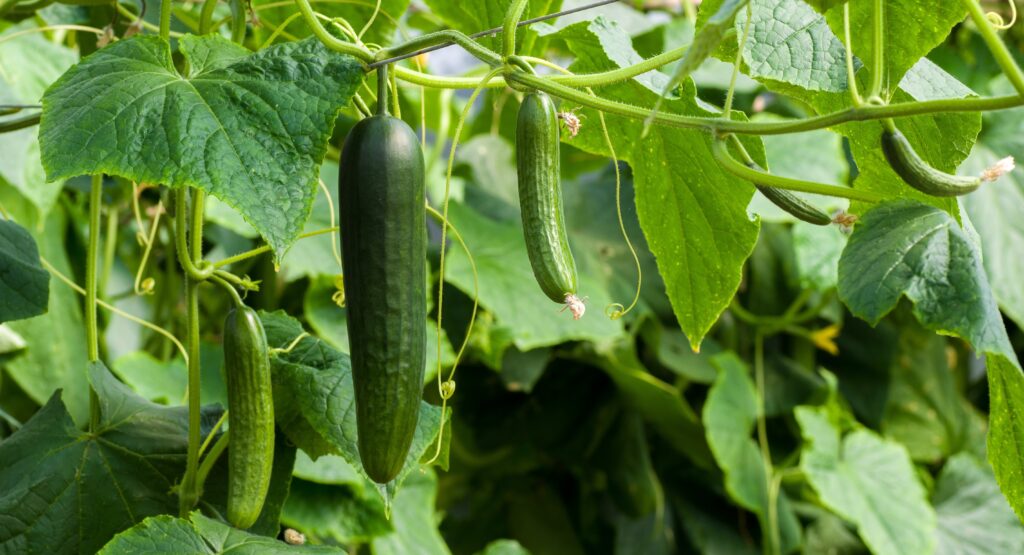
Cucumbers thrive in moist soil, which conflicts with the drier, well-drained conditions that zinnias prefer. This difference in water needs can hinder the growth of both plants when grown together. Cucumbers also tend to grow aggressively, shading out the zinnias and blocking their access to sunlight. It is best to plant cucumbers in a separate area where their moisture needs can be better managed.
Cucumbers require more space and support, which can crowd zinnias, limiting their growth. Their aggressive growth habit can overshadow the zinnias, reducing their ability to thrive. Separating cucumbers from zinnias ensures both plants have the right conditions to grow. Keeping them apart promotes better growth for both species.
Beans
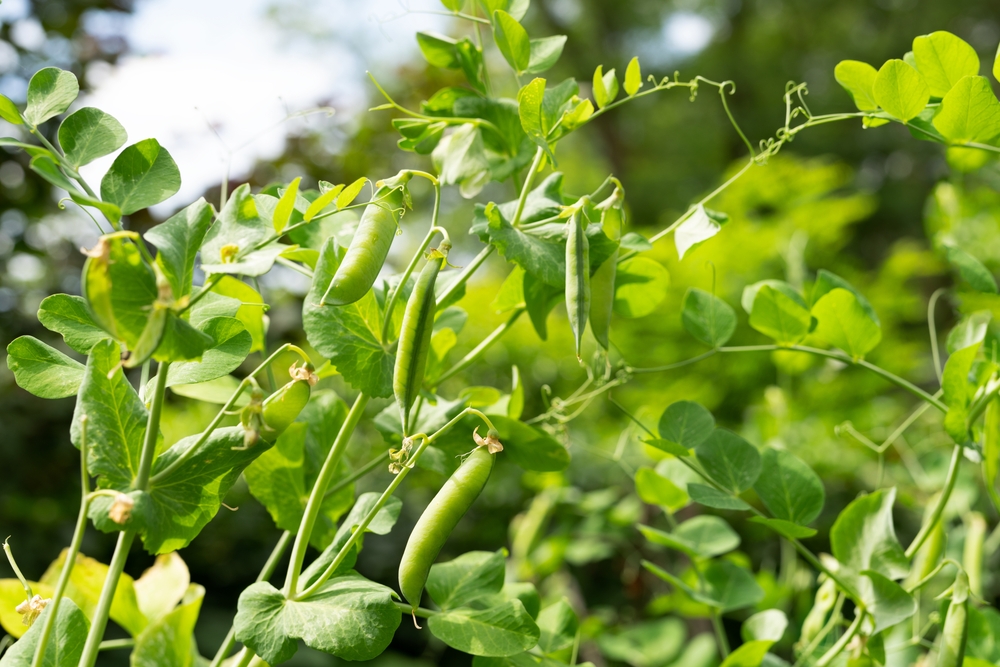
Beans need more space to grow and can overshadow zinnias, blocking their access to sunlight. The competition for resources such as light and space can hinder the growth of both plants. Beans also prefer more moisture than zinnias, making them incompatible when planted together. It is best to plant beans and zinnias apart to allow both to grow in their ideal conditions.
Beans grow upright, while zinnias have a bushy form, which can lead to competition for light. Planting beans with zinnias can reduce the overall growth and health of both plants. Keeping them separate will allow both plants to thrive in their respective spaces. This ensures optimal growth for each plant.
Potatoes

Potatoes need cooler, moist soil to grow, while zinnias prefer warmer, drier conditions. This difference in moisture requirements can cause competition, which may result in poor growth for both plants. Additionally, potatoes are susceptible to pests like aphids, which could harm nearby zinnias. To prevent these issues, it is best to plant potatoes away from zinnias in areas with better moisture control.
Planting potatoes and zinnias together can lead to an imbalance in the garden’s moisture levels, with one plant’s needs potentially harming the other. The competition for water can lead to stunted growth for both plants. Moreover, the presence of pests attracted to potatoes can affect the health of the zinnias. Keeping potatoes in a separate area ensures that both plants have the right environment to grow.
Carrots
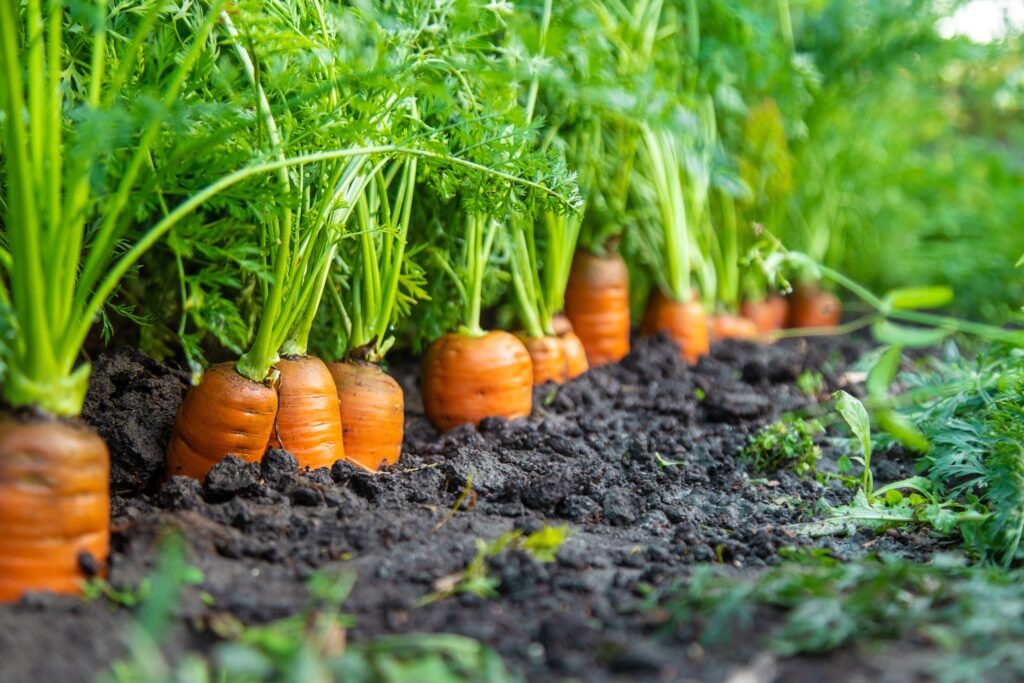
Carrots prefer cooler, moist soil, which is not ideal for zinnias that need well-drained, warmer soil. These differing water and soil requirements can make it challenging for both plants to thrive when grown together. Carrots also require deeper soil for root development, which may interfere with the shallow root systems of zinnias. It is better to plant carrots away from zinnias to avoid competing for space and resources.
Growing carrots and zinnias together could result in poor growth for both plants. The deep roots of carrots may disrupt the shallow roots of zinnias, limiting their access to water and nutrients. Moreover, the differences in moisture needs can cause stress for both plants. To ensure healthy growth, keep these two plants in separate garden areas.
Onions
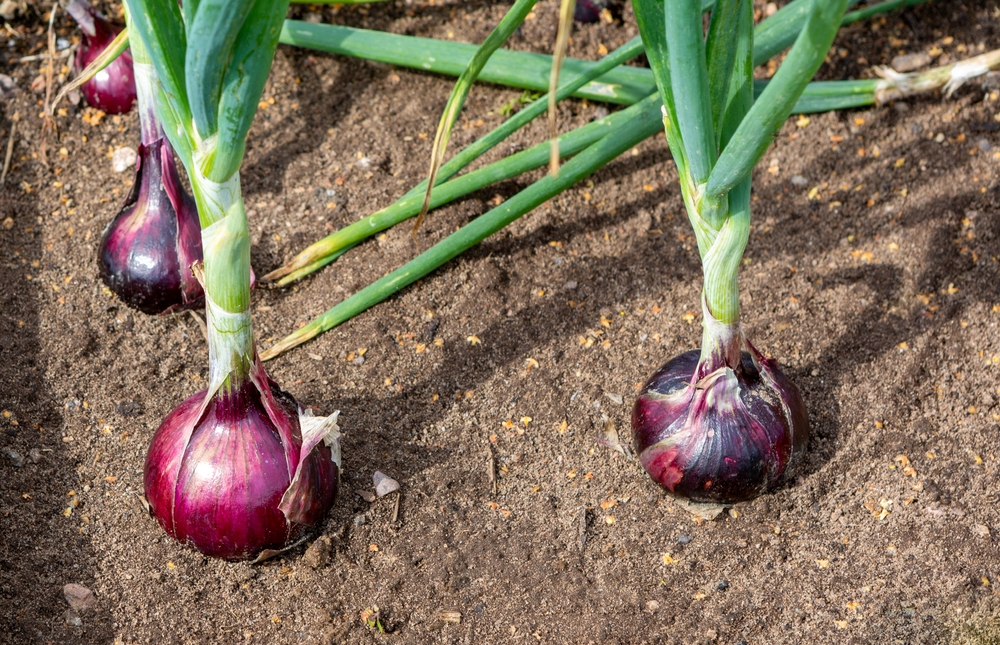
Onions require consistently moist soil, while zinnias thrive in well-drained, drier soil. This difference in moisture requirements can lead to one plant outgrowing the other or experiencing stress. Planting onions with zinnias could cause competition for both water and nutrients, reducing the overall health of the plants. It is best to plant onions in a separate area where their moisture needs can be better managed.
Zinnias may struggle to grow in the same space as onions, as the soil may become too moist for their liking. The roots of onions and zinnias could compete for the same nutrients, leading to stunted growth. To avoid these issues, it is better to keep these plants separate. Planting them in different sections of your garden will allow them to thrive.
Garlic

Garlic requires moist, cool soil, which is not suitable for zinnias, which prefer dry, well-drained conditions. Growing garlic near zinnias can result in root rot for both plants, as the moisture levels needed for garlic are harmful to the zinnias. Garlic’s growth habit also requires more consistent watering, which can cause an imbalance in the garden environment. To keep both plants healthy, it is best to grow garlic away from zinnias.
The contrasting water and temperature preferences between garlic and zinnias can hinder the growth of both. Zinnias require drier soil, while garlic thrives in consistently moist conditions. This competition for moisture can lead to poor growth for both plants. Growing them separately ensures that both plants have the right conditions to thrive.
Pepper Plants

Pepper plants require consistent moisture, which conflicts with zinnias’ preference for drier soil. This difference in watering needs can lead to one plant outgrowing the other or suffering from improper watering conditions. Zinnias may also struggle with peppers shading them out, as peppers tend to grow taller and can block sunlight. To prevent these issues, plant peppers in a different area of your garden.
Pepper plants also need more water than zinnias, which can cause the soil to become too moist for the zinnias to thrive. This excess moisture can lead to root rot for the zinnias and stunted growth for the peppers. Additionally, the taller peppers can block sunlight from reaching the zinnias, reducing their ability to grow. Keeping peppers and zinnias apart will give both plants the environment they need.
Tomatoes
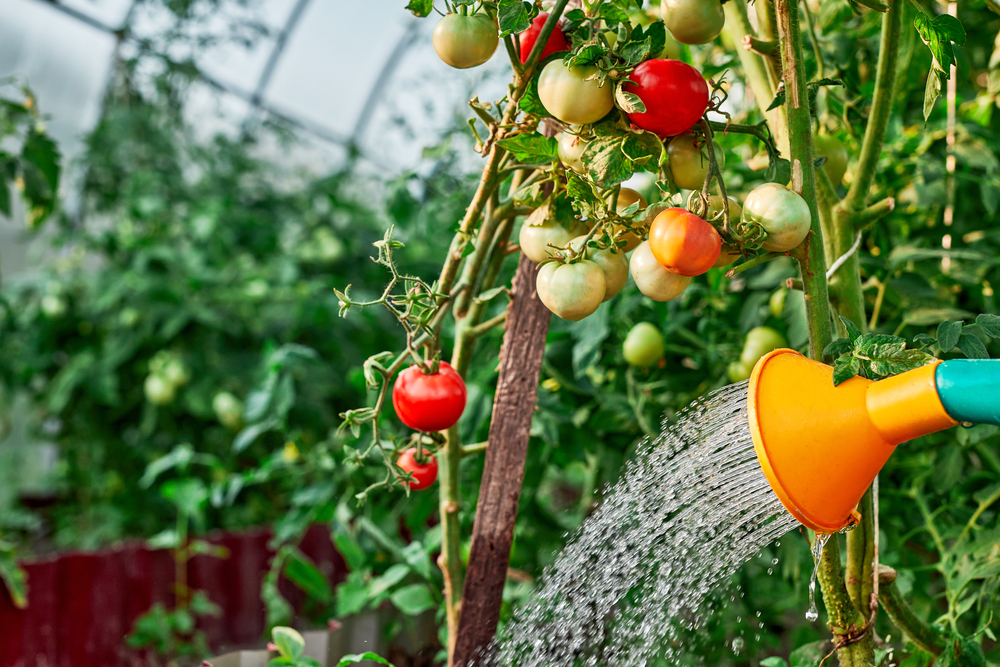
Tomatoes and zinnias both require full sun but have different moisture needs. Tomatoes need more consistent watering, while zinnias prefer dry, well-drained soil. This difference can lead to an imbalance in the moisture levels, affecting the growth of both plants. It is best to plant tomatoes away from zinnias to avoid competition for water.
The difference in watering requirements can cause stress for both plants, as one may receive too much or too little water. Additionally, tomatoes tend to be taller and may overshadow the zinnias, limiting their access to sunlight.
Having the right companion plants for zinnias enhances the beauty and overall health of your garden. Steering clear of unsuitable plants ensures your zinnias have the best possible environment to thrive. With the proper plant combinations, your garden will remain vibrant and flourishing throughout the season.
